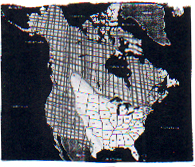 This collection of student work is from Frank Keim's classes. He wants to share these works for others to use as an example of culturally-based curriculum and documentation. These documents have been OCR-scanned and are available for educational use only.
This collection of student work is from Frank Keim's classes. He wants to share these works for others to use as an example of culturally-based curriculum and documentation. These documents have been OCR-scanned and are available for educational use only.Special | A | B | C | D | E | F | G | H | I | J | K | L | M | N | O
P | Q | R | S | T | U | V | W | X | Y | Z | ALL
Common Raven - Profiles of Ravens Family:Common Raven
Latin name: Corvus Coras The Common Raven is a large, all black bird similar to the Common Crow. Though it is much larger and much heavier than a crow, this difference may be difficult to discern from a distance. The raven's longer wings and long, wedge-shaped or rounded tail further distinguish it from the crow, which has a shorter, more squared tail. The bill of the Common Raven is huge, very deep at the base, and relatively much larger that the crow's. The Raven's neck feathers are pointed, giving it a distinctively shaggy appearance. Common Ravens are amazing aerial acrobats, soaring, tumbling, rolling, and even chasing hawks and eagles. Theses birds are omnivorous, and seem to be especially fond of carrion; they are often seen over and along highways searching for and feeding on road kills. This species is found in a wide variety of habitats, including rocky seacoasts, steep canyons, dense boreal forests, foothills, mountains (even at altitudes above timberline), deserts, and Arctic tundra. Common Ravens are usually seen singly, in pairs, or in small groups. It is considered to be the most intelligent bird in the world. Description 21 1/2-27" (54.5-68.5cm). This is a large black bird with a glossy, metallic sheen to its plumage. It is stocky and rounded, with a thick neck, a large head, and a large, very deep black bill. The legs are thick, stocky, and black. The throat feathers are long and pointed, creating shaggy appearance. In flight, the wings appear long, broad, and rounded at the tip rather than pointed; the large, wide tail is long and wedge-shaped or rounded. Voice Variable, including very hoarse, low-pitched, croaking notes: crock, quak, quork. Similar Species See Chihuahuan Raven. Common Crow much smaller, with relatively smaller bill, shorter, squared tail, and very different call; flies on rather continuous, relatively faster, rolling wingbeats. Range In New World, from Arctic Alaska across Canada to Greenland, south through western United States and Mexico to Nicaragua; in eastern United States, found in Maine, western Great Lakes region, Adirondacks, and Appalachians. Also throughout Old Wotid and Southern Hemisphere. | |
|





